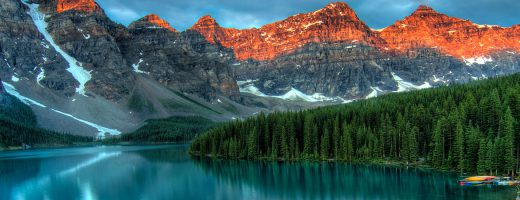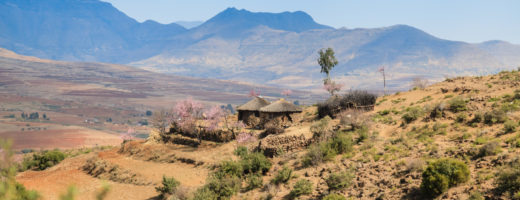The three famous cemeteries portrayed here contain the remains of Russia’s most notable artists, politicians, military leaders, elite class members and the Czars–including the reburial of the last Czar, Nicholas and his family who were assasinated in 1918 and finally reburied in St Petersburg in 1991. More inspiring are the sites of the great artists
Leo Tolstoy’s Estate Yasnaya Polyana
Yasnaya Polyana was the home of the writer Leo Tolstoy, where he was born, wrote War and Peace and Anna Karenina, and is buried. Tolstoy called Yasnaya Polyana his "inaccessible literary stronghold,". It is located 12 kilometres (7.5 mi) southwest of Tula, Russia and 200 kilometers (130 miles) from Moscow. In 1921 the estate formally became
Random Views of Cologne 2010
Cologne is Germany’s fourth-largest city (after Berlin, Hamburg and Munich), and is the largest city within the Rhine-Ruhr Metropolitan Area, one of the major European metropolitan areas with more than ten million inhabitants. It is one of the oldest cities in Germany, having been founded by the Ubii in the year 38 BC. The name
Visit to Beethoven’s Birth House in Bonn 2010
The house at the Bonngasse No. 20, in which Beethoven was born in 1770, is the family’s only residence in Bonn which is still maintained and still in its original condition. Since 1893, it has been accommodating a museum, which, in the meantime, presents the biggest Beethoven collection of the world. The house, in which
Rhine River Castle Cruise 2010
One of Europe’s most picturesque trips is a boat ride down (north) on the Rhine River, from Rudesheim to Koblenz, part of the ‘Middle Rhine’ (from Mainz to Cologne). Between these two destinations there are about twenty-five castles and more charming villages. Tour boats share this part of the river with large cargo barges, cross-river
Gay Games in Cologne 2010
The Gay Games were started in 1982 by Tom Waddell, an Olympic athlete who wanted to have a similar event for the LGBT community worldwide. The eighth version, 2010, of the Games was held in the gay-friendly city of Cologne, Germany. There were about 9000 athletes who participated in 35 sports. In addition there were
Images of Gay-Friendly Cologne City 2010
Cologne is one of Europe’s gay capitals and was host to the 2010 Gay Games . For a busy and energiized week, July 31 to August 7, the city bubbled with 35 sports events, cultural events and colorful parties, as well as two enertainment/social/eating ‘villages’ in the central area. In addition to the many usual
Meuse-Argonne Towns of Grandpre, Vouziers and Dun-sur-Meuse
Grandpre, Vuziers and Dun-sur-Meuse are Meuse-Argonne towns that saw fierce fighting in October 1918 as American combat troops battled their way north against the retreating but dangerous Germans, sometimes in hand-to-hand and bayonet combat. All three town were devastated by artillery, grenades, poisonous gas, machine guns from both sides. The entire region of the Meuse-Argonne
Verdun Region Memorials of World War 1
Around and in historic Verdun there are numerous monuments, cemeteries, memorials and battle sites from the First World War that are preserved in remembrance of those whose lives were shattered by the horrors and bloodshed of that war. In this gallery are photos of the Douaumont Ossuary, the French National Cemetery in Verdun, the Douaumont
The ’14-’18 Museum in Romagne-sous-Montfaucon
Gallery introduction by David Laskin, New York Times, September 30, 2007 and Richard Ammon, GlobalGayz.com, 2010 In the tiny village of Romagne-sous-Montfaucon, adjacent to the Meuse-Argonne Cemetery and the Montfaucon Monument, a dedicated Dutch couple, Bridget and Jean-Paul de Vries, have opened the intirguing 14-18 Museum to display their extraordinary collection of World War I
Meuse-Argonne Villages of St Juvin and St Georges
The small villages of St Georges and St Juvin are located about three miles apart in the Meuse-Argonne region. Between the two villages runs the road that was, in October 1918 of World War 1, the temporary front line between the Germans to the north and the Americans to the south. The fighting was bloody
Meuse-Argonne Villages and Memorials
The Meuse River–Argonne Forest region in eastern France is a hilly area with forests and rivers that forms a natural barrier between the Champagne and Lorraine regions. The Argonne Forest is about 40 miles long and 10 miles wide (65 by 15 km). The highest massif rarely exceeds 650 feet (200 m) in elevation but
Meuse-Argonne Military Cemetery
This gallery displays photos of three war memorial locations in remembrance of American troops who fell during the Meuse-Argonne Offensive 1918. (1) The Meuse-Argonne American Cemetery and Memorial is a 130.5-acre (0.528 km2) World War I cemetery in France. It is located east of the village of Romagne-sous-Montfaucon in Meuse. The cemetery contains the largest
The 1918 Meuse-Argonne Offensive in France during World War I and the Death of Uncle John
Introduction Real Ghosts: this is the story of tracing the footsteps of an American uncle/soldier killed in World War 1, during the Meuse-Argonne Offensive of Sept-Nov 1918. I’m tempted to call my recent visit to northeast France ‘a trip to bountiful’ because, like the 1985 movie, the journey involves gripping memories that hold close to
Gay Games 2010, Cologne, Germany
By Richard Ammon GlobalGayz.com August 14, 2010 I’m back home from another stellar week of the Gay Games, my 7th, in Cologne, Germany (July 31-Aug 7). The Gay Games are the gay version of the Olympics but since we legally can’t called them that, Gay Games will have to do. Besides that name rings truer
Gay Germany: Cologne and the Gay Games 2010
Intro: A successful Gay Games extravaganza was mounted in Cologne in August 2010 with tens of thousands of visitors joining more thousands of native LGBT German citizens in this beautiful and ancient city on the Rhine River. For a week the city was filled with 25 different kinds sports and hundreds of competitions. There was
Moscow Gay Pride Launched–Heading into Bloody Battle
Fifth attempt to challenge Mayor’s Pride ban in central Moscow this Saturday 29 May Posted by Richard Ammon GllobalGayz.com Moscow 27 May 2010 The fifth attempt to hold a Moscow Pride parade was launched today in the Grand Ballroom at the Lesnaya Holiday Inn hotel in Moscow. Nikolai Alekseev, the Moscow Pride organizer (photo right),
Gay Pride Attacked in Belarus
Richard Ammon GlobalGayz.com May 15, 2010 Saturday May 15 2010, gay Pride day in Minsk, Balarus, arrived and there were no unusual surprises: trouble was anticipated and trouble there was. The gay participants knew the police would try to stop them. The police knew where the marchers were and intercepted them–but not before the combined
Gay Belarus 2010: The Politics of Pride–a Festival Under Attack
Gay Pride in Minsk, Belarus (Slavic Pride 2010) Despite exhuberant celebrations and huge parades in the West, Gay Pride events elsewhere, such as Belarus, remain difficult and dangereous. Gay Pride is very much still a global fight for human rights, both in the streets and in a new documentary film. By Richard Ammon and UK
Leo Tolstoy and Russian Soup
Richard Ammon GlobalGayz.com I recently traveled to Russia where I visited three cities: Moscow, St. Petersburg and Tula. Tula? It’s hardly a tourist hotspot, but this industrial city 120 miles south of Moscow is the location of a world renown site that has become a shrine of sorts for intellectuals, students and lovers of Russian
King Ludwig’s Castle Neuschwanstein, Bavaria
In 1869, King Ludwig of Bavaria oversaw the laying of the cornerstone for Schloss Neuschwanstein on a breathtaking mountaintop site overlooking his childhood castle home at Hohenschwangau. The walls of Neuschwanstein are decorated with frescoes depicting scenes from many of Richard Wagner’s, operas, especially the swan-themed Lohengrin. Obsessed with Wagner’s, music, in 1872, he began
A Friendly Trip into Gay Cornwall
By B.J. Epstein Autumn 2009 As my partner and I were planning our recent trip to Cornwall (in the far southwest of the English mainland), I was surprised by the number of B&Bs there that claimed to be “gay-friendly.” The last supposedly gay-friendly place we’d stayed at was a hotel in cosmopolitan London where, when
Gay Walt Whitman Statue Unveiled in Moscow by Hillary with Homophobic Mayor’s Approval
Westhampton, MA – October 15, 2009 Richard Ammon –GlobalGayz.com Didja read this one!? Goes to show how schizoid homophobia can be–and how dangerous it is in the hands of irrational public authorities. From (AFP) in the Times of London, October 15, 2009 A statue of the American poet and gay icon Walt Whitman was unveiled
Olympic Committee Should Monitor Host Countries on Human Rights
Human Rights Watch New York October 7, 2009 Olympic Congress Should Adopt a Plan to Oversee Human Rights Environment for the Olympic Games The Copenhagen Olympic Congress should create a permanent mechanism to monitor human rights in host countries before, during and after Olympic Games. Human Rights Watch, which has submitted a proposal to the
UK Government Aplogy to WW2 Hero Alan Turing
Westhampton, MA – September 11, 2009 Richard Ammon – GlobalGayz.com On September 10, 2009, the British Prime Minister Gordon Brown officially apologized to Alan Turing for the UK Government’s persecution of this WWII hero because of his homosexuality. Turing brilliantly invented his ‘Turing Bombe’ that crucially helped crack the German Enigma coded messages (sometimes thousands







